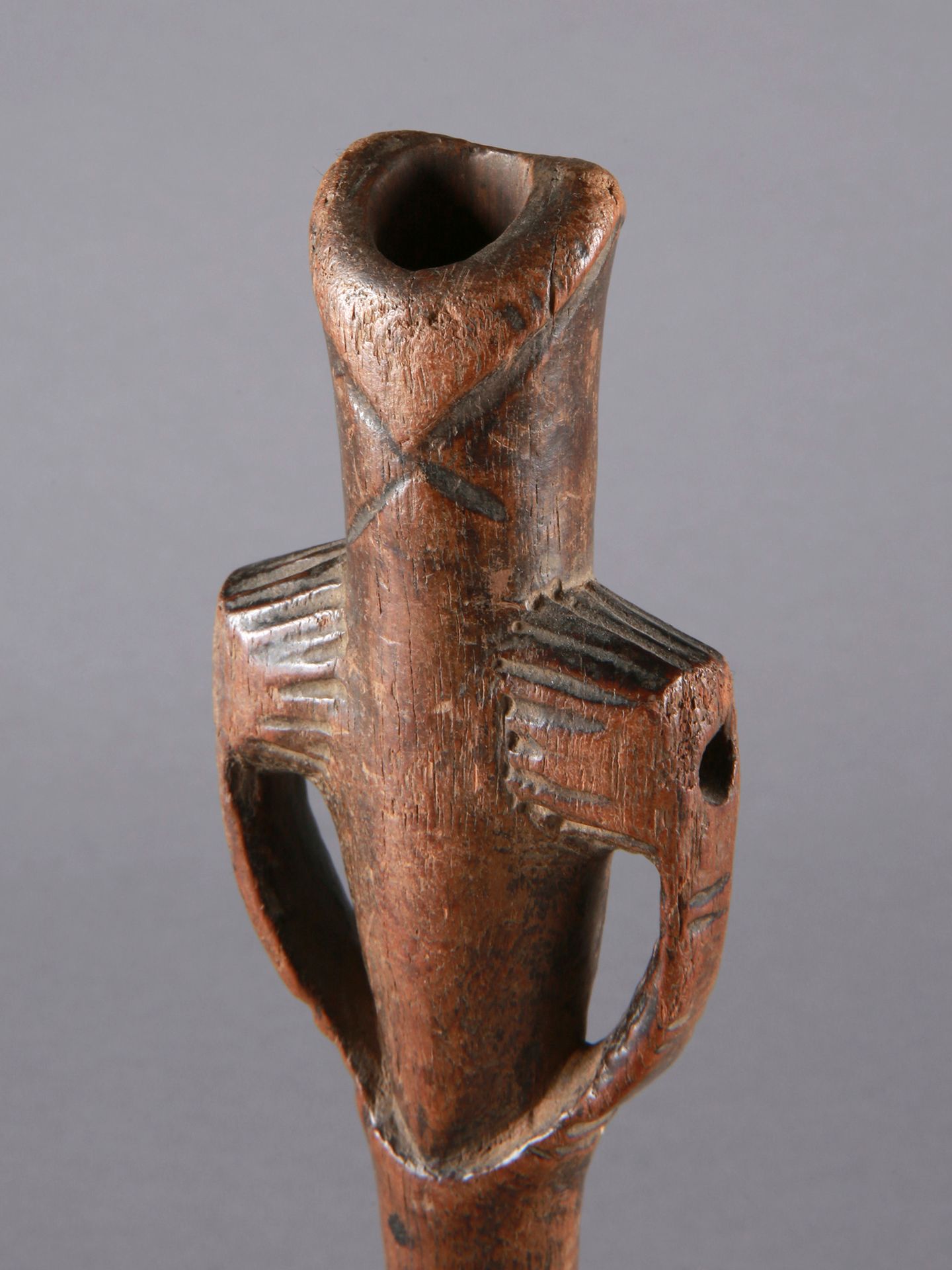Description
A Bwa Flute, "mpiru" Notch flute, "mpiru" Bwa, Burkina Faso Mit Sockel / with base Wood. H 21,5 cm. Provenance: Jean David, Basel. Acquired in situ before 1991. Aerophones occur in many variations throughout Africa, whereby the regionally homogeneous forms allow clear geographical classifications. These popular instruments are played in very different ways depending on the occasion. Individually or in groups, e.g. as a signaling instrument, as a means of communication, for entertainment or ritually as accompanying instruments at initiations, weddings, births and funerals. The design of the African kerb flutes usually only allows two to three notes to be played at different intervals. Accompanied by other flutes, this creates complex monotonous melodies that are close in sound to the local languages. As a result, the nuanced tone sequences can be understood like spoken words according to common literature. Flutes are generally the personal property of men. They receive their first flute on the occasion of initiation, although they can also be purchased from carvers, made by the men themselves or received as a gift (e.g. when women are betrothed to men). The most common are notched flutes carved from wood with a cross hole, two or three finger holes and air vents. Less common are those made of ivory, bone or metal, as well as specimens that are supplemented with other materials such as leather. The almost invariably abstract forms often depict anthropo-zoomorphic hybrid creatures that combine female and male attributes. Worn as jewelry on hanging holes, the instruments are also status symbols and external signs of the owner's rank and affiliation. What is particularly attractive to collectors about these objects, which have been used for many years, is not only their good state of preservation but also the visible signs of wear and tear and the ideally dark brown to black, sometimes encrusted patina. Further reading: Brown, E. (1999). Turn up the Volume. Los Angeles: UCLA Fowler Museum of Cultural History. CHF 100 / 200 Condition: The condition (wear, eventual cracks, tear, other imperfections and the effects of aging etc. if applicable) of this lot is as visible on the multiple photos we have uploaded for your documentation. Please feel free to contact Hammer Auktionen for all questions you might have regarding this lot ([email protected]). Any condition statement given, as a courtesy to a client, is only an opinion and should not be treated as a statement of fact. Hammer Auctions shall have no responsibility for any error or omission. In the rare event that the item did not conform to the lot description in the sale, Hammer Auktionen is here to help. Buyers may return the item for a full refund provided you notify Hammer Auktionen within 5 days of receiving the item. -------------------------------------------- The condition (possible wear, signs of use, cracks, possible other damage and signs of age, etc.) of this lot can be seen in the photos we have uploaded for your documentation. If you have any questions about this item, please do not hesitate to contact Hammer Auctions ([email protected]). The information regarding the condition of the items provided for the convenience of interested parties is an opinion only and should not be treated as a statement of fact. Hammer Auctions accepts no responsibility for any errors or omissions. In the rare event that the item does not match the description in the catalog, Hammer Auctions is here to help. Buyers may return the lot for a full refund provided they notify Hammer Auctions within 5 days of receiving the lot.
You may also like
